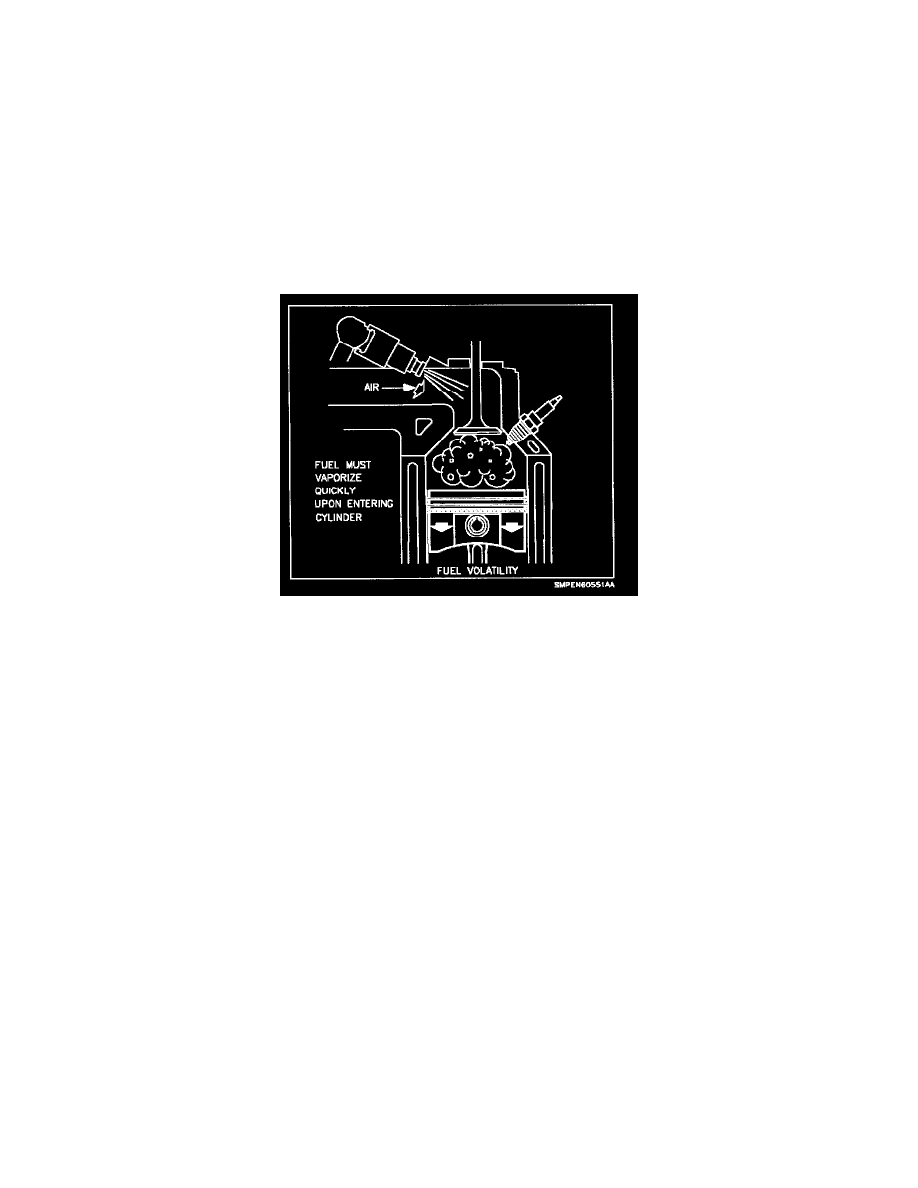L300 V6-3.0L VIN R (2001)

matches the laboratory sample's performance in the engine will be rated 87 octane.
Reid Vapor Pressure (RVP) Test - The Reid Vapor Pressure (RVP) test indicates the fuel's tendency to evaporate early. The test also indicates how the
engine may perform during a cold start and warm-up. The higher the RVP, the higher the volatility.
RVP is measured using a Reid vapor pressure tester. A gasoline sample at 32°F is placed in a sealed container that is attached to a pressure gage. The
container is then placed in a 100°F water bath for two to five minutes. The gage reads the pressure in pounds per square inch psi) exerted by the
vaporized fuel within the sealed container. This test can be performed using the Saturn Service Fuel Test Kit SA9213NE (or equivalent).
According to more stringent standards effective on June 1, 1992, except in Alaska and Hawaii, the EPA limits RVP to 9.0 psi maximum between May
and September 15. In "ozone non-attainment" areas in the southern and western U.s., the EPA limits RVP to 7.8 psi maximum between June 1 and
September 15. The EPA permits these maximum vapor pressures to be 1.0 psi higher for gasoline-ethanol blends that contain (by volume) 9 to 10%
ethanol.
Volatility
Volatility is a gasoline's tendency to change from a liquid to a vapor. Volatility is crucial to engine performance. Liquid gasoline will not bum; only
vaporized gasoline bums. Once liquid fuel is injected into an intake port and mixed with air, some of it should start evaporating immediately.
Any liquid's rate of evaporation changes with temperature. Temperatures in an engine vary widely. During operation, the combustion chamber
temperatures may rise to more than 822°C (1500°F). Before start-up, on a very cold morning, the temperature may be zero. To burn well across the
broad range, a fuel must consist of a mixture of hydrocarbons that vaporize at different temperatures.
The smaller hydrocarbon molecules vaporize at lower temperatures and the larger hydrocarbon with larger molecules vaporize at higher temperatures.
The easily vaporized hydrocarbons, which are easy to burn, are called the "light-ends." They help with quick starts when the engine is cold. The less
volatile "heavy-ends" contribute more to engine power; but because they are harder to burn, they can coat the cylinder walls without burning and in
extreme cases may dilute the oil in the crankcase.
Lower volatility is desirable in the summer to prevent excessive premature evaporation of the fuel. In the winter, high volatility is desirable because the
fuel must vaporize quickly for cold starts and good cold driveability.
Volatility affects the following:
^
Cold start and warm-up.
^
Cool weather driveability.
^
Deposits in crankcase and combustion chamber.
^
Deposits on intake valves and spark plugs.
^
Hot start and drive-away.
^
Vapor lock.
^
Evaporation loss.
